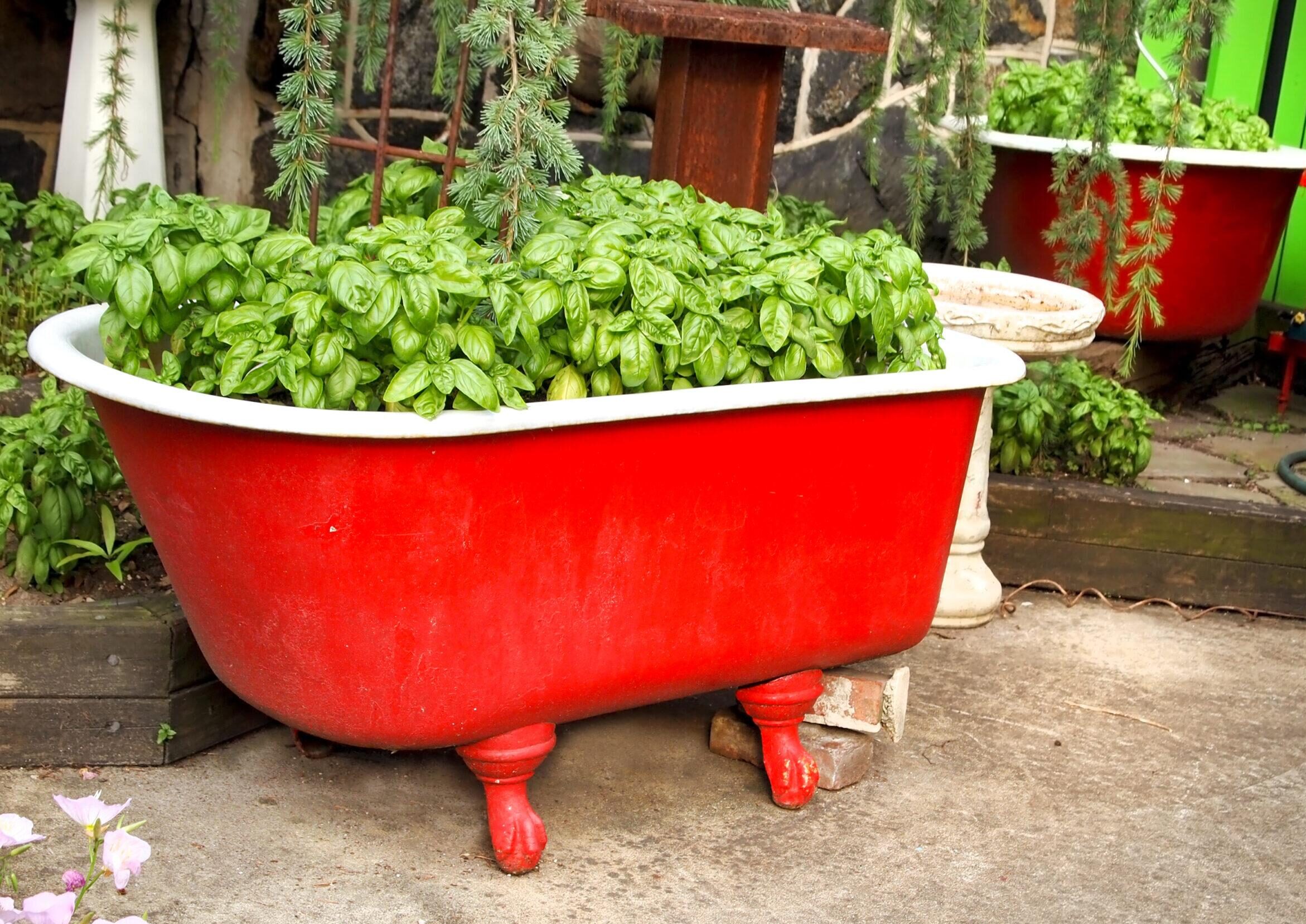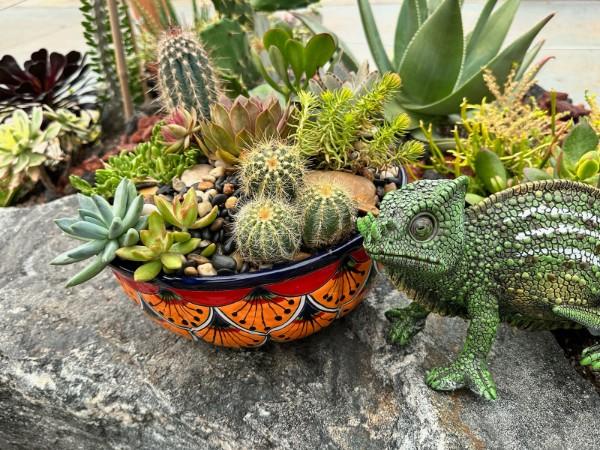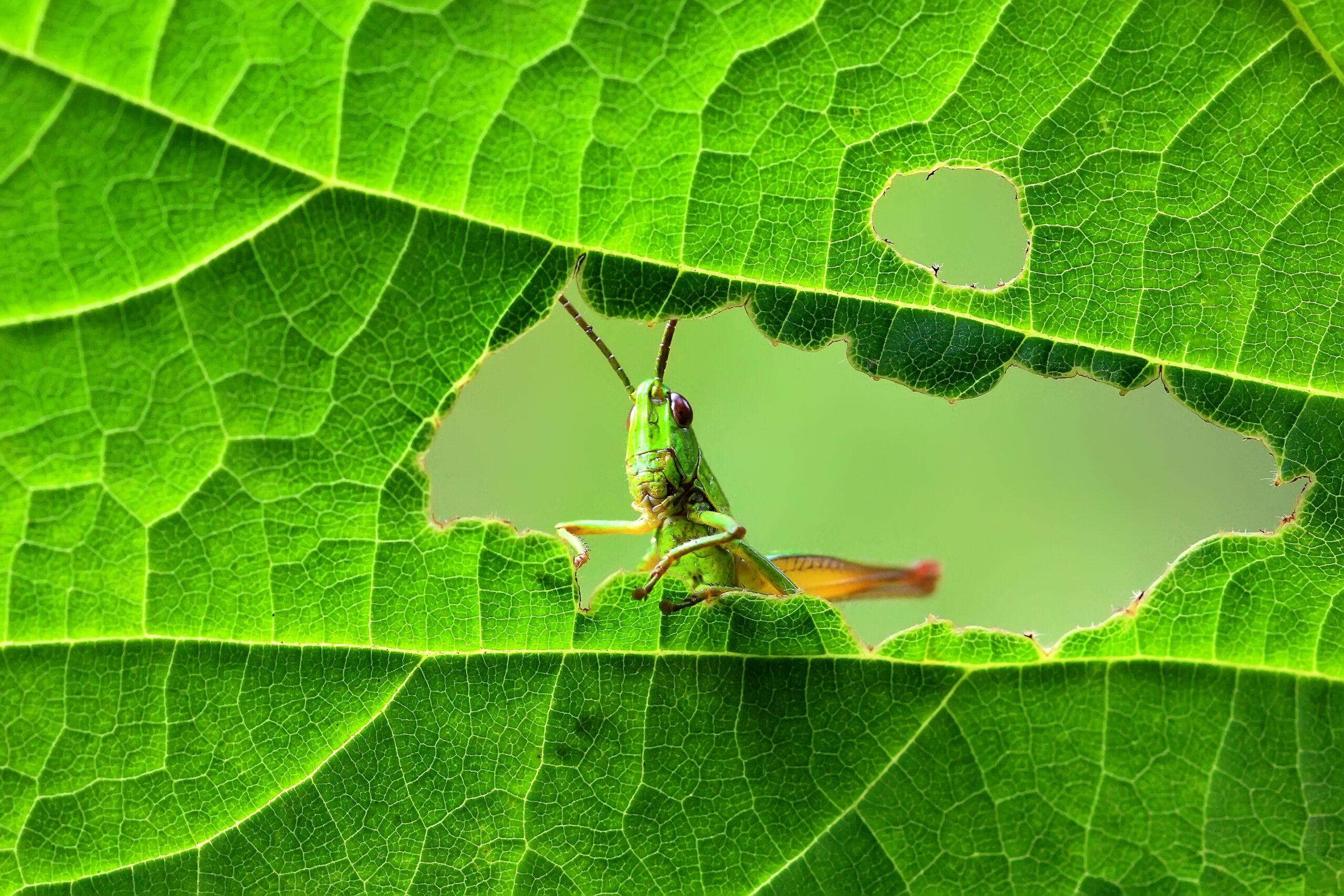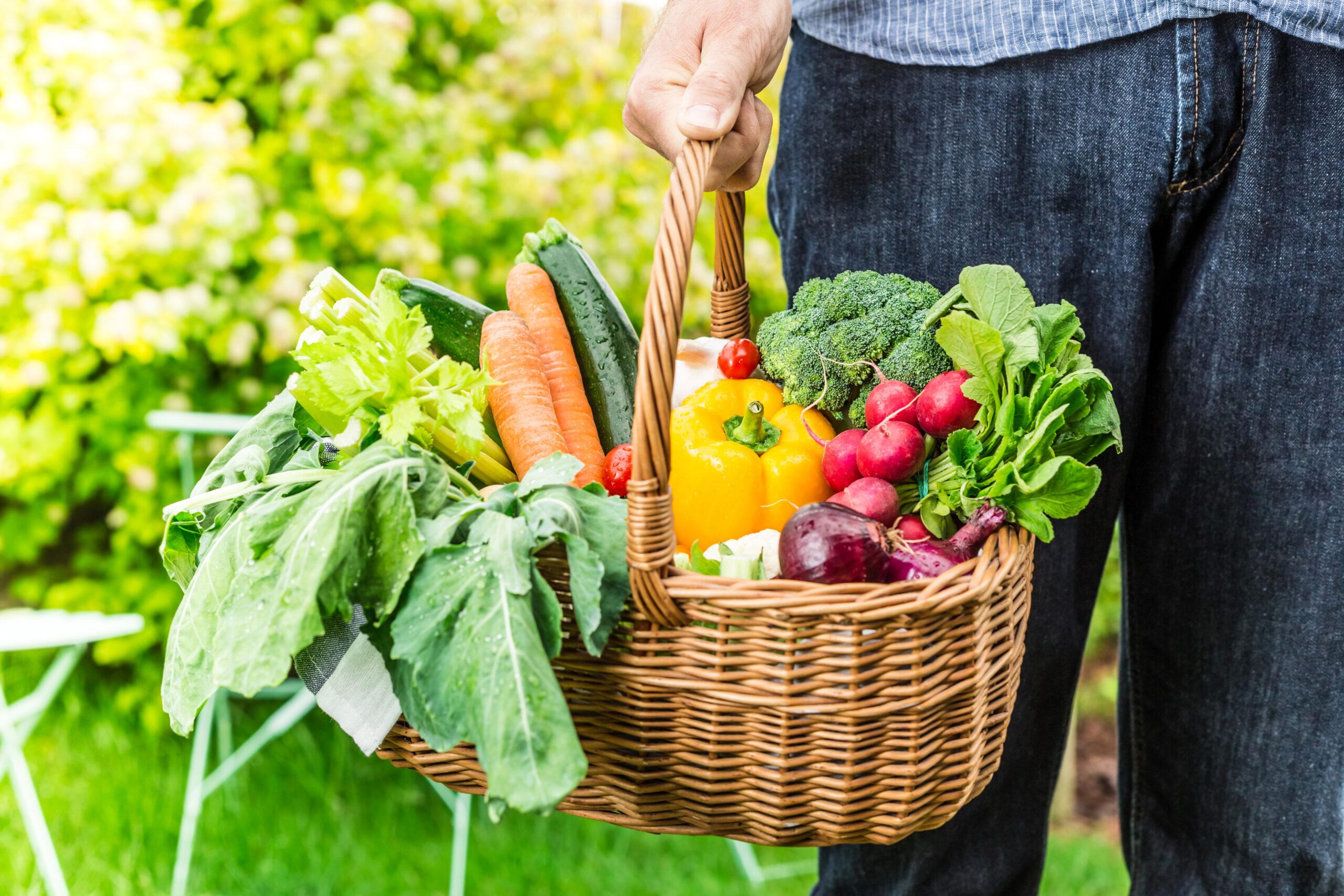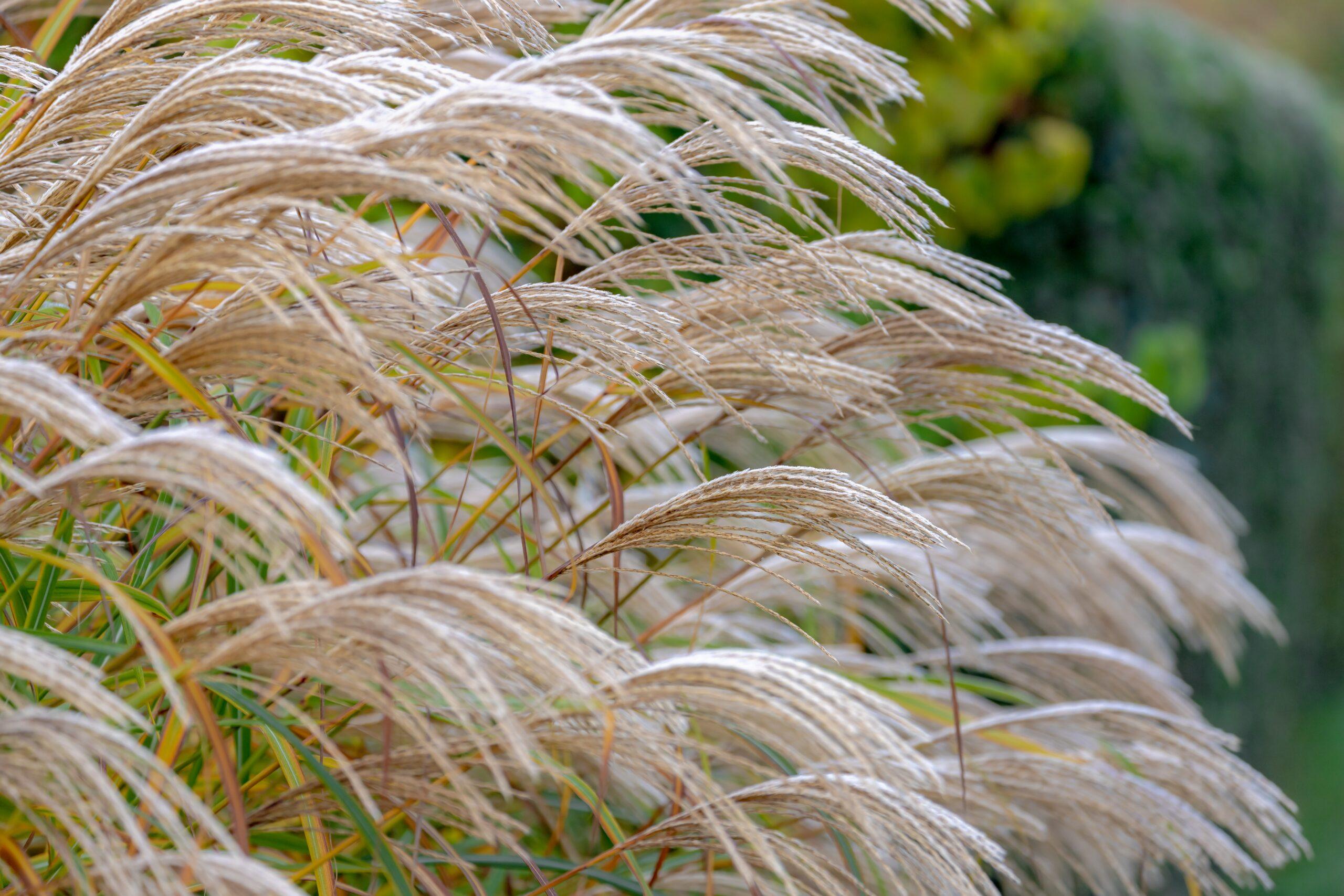Ok, so maybe you don’t want an entire old-timey bathtub full of basil, as shown above. Then again, if you’re a basil fanatic, and many people are, maybe you do! Either way, it’s a gardening fact: many of the most popular herbs are right at home in containers, even bathtub-sized ones!
Let’s take a look at the basics of growing eight of the most in-demand herbs in containers and see if you might want to try creating an herb garden of your own. Before we begin, one important note: any container used for growing herbs (and most any plant, really) needs to have good drainage. Different types of pots can be used, but just assume that adequate drainage is non-negotiable and you’ll save yourself a lot of headaches.
Basil
Of course we have to start with basil. It’s one of the most aromatic and in-demand herbs available to home gardeners. Tagawa carries a wide selection of basil and other herbs year ’round, but as the gardening kicks into full gear, our selection of basil varieties is unmatched!
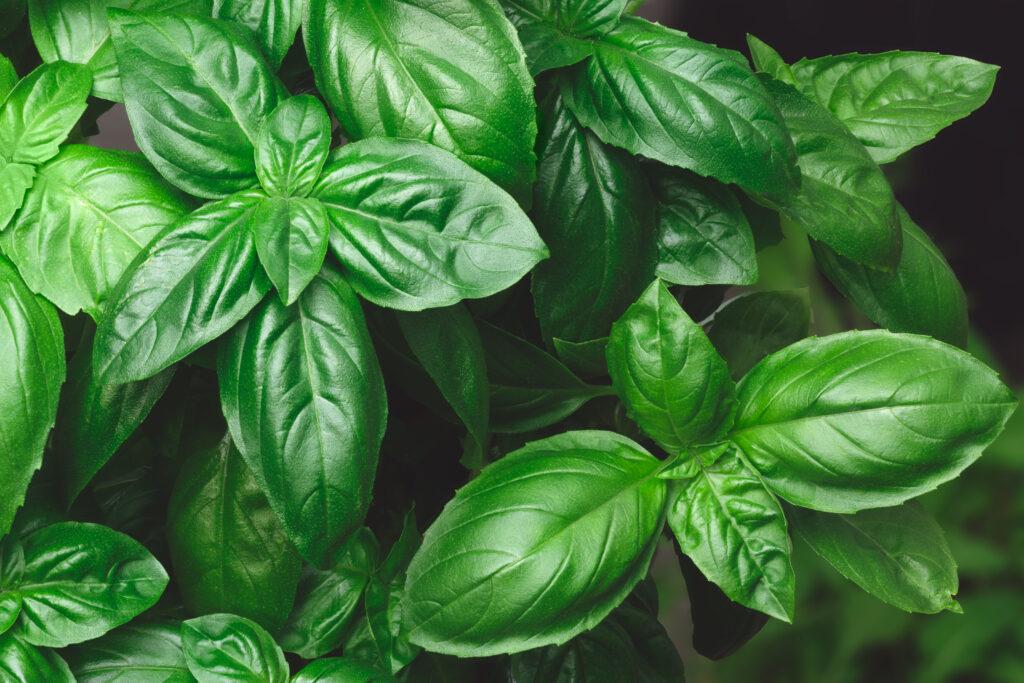
The “best” basil is definitely a matter of opinion. Genovese or sweet basil (shown above) is probably the crowd favorite. I’m going for something a bit stronger this year and growing Thai basil in a fifteen-inch pot just outside my kitchen door.
All of the basil varieties are easy to grow in containers. Most prefer full but not intensely hot sun, others are fine with morning sun and light afternoon shade. Basil prefers a fairly rich but well-drained soil. Let the surface of the soil dry out between waterings. Trim the growing tips regularly to encourage a bushy plant.
Note: with all herbs featured here, including basil, never harvest more than one-third of the plant at any one time during the growing season. The entire plant can be harvested at the end of summer.
Cilantro
In my experience, cilantro seems to be something that people either like or can’t stand, with the dissenters saying it tastes like soap. I’m in the “like” group.
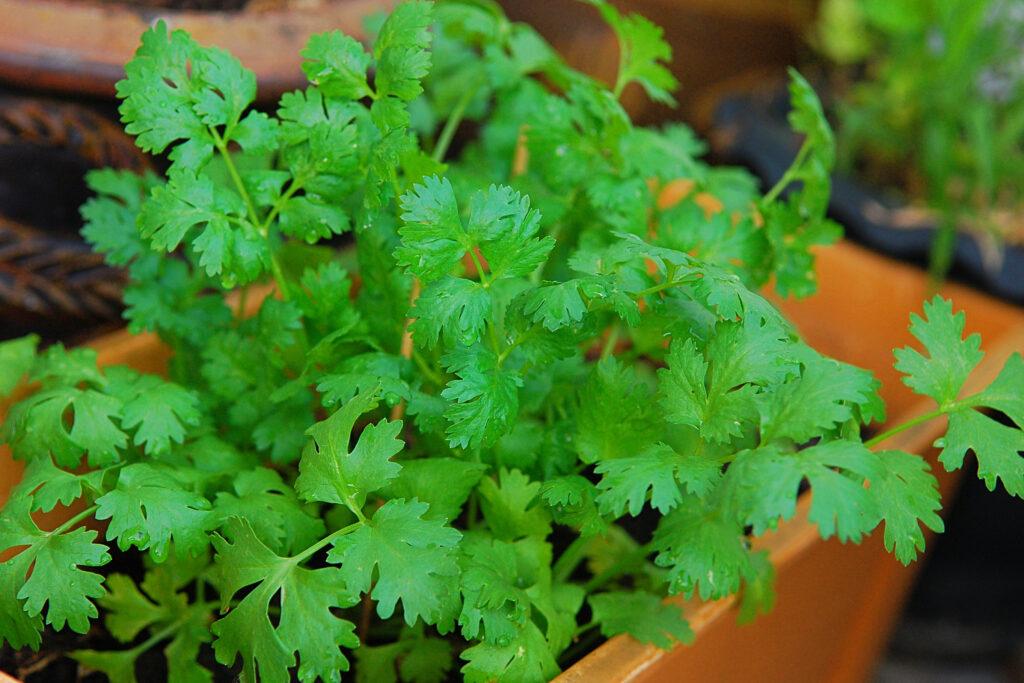
Cilantro is definitely one of the fastest herbs to bring to harvest. Sown from seed, it will produce usable leaves in four to five weeks. For true cilantro lovers, grow one container from a small plant and sow seed for a second plant or two for follow-up harvests.
Cilantro will bolt (produce seed) in very hot weather. It will do very well in a location with morning sun and some protection from hot summer temperatures later in the day. Keep cilantro plants slightly moist but never soggy.
Lavender
Many varieties of lavender do extremely well planted in beds in Colorado and deserve a place in our gardens, but for growing in containers, Spanish lavender is your best choice.
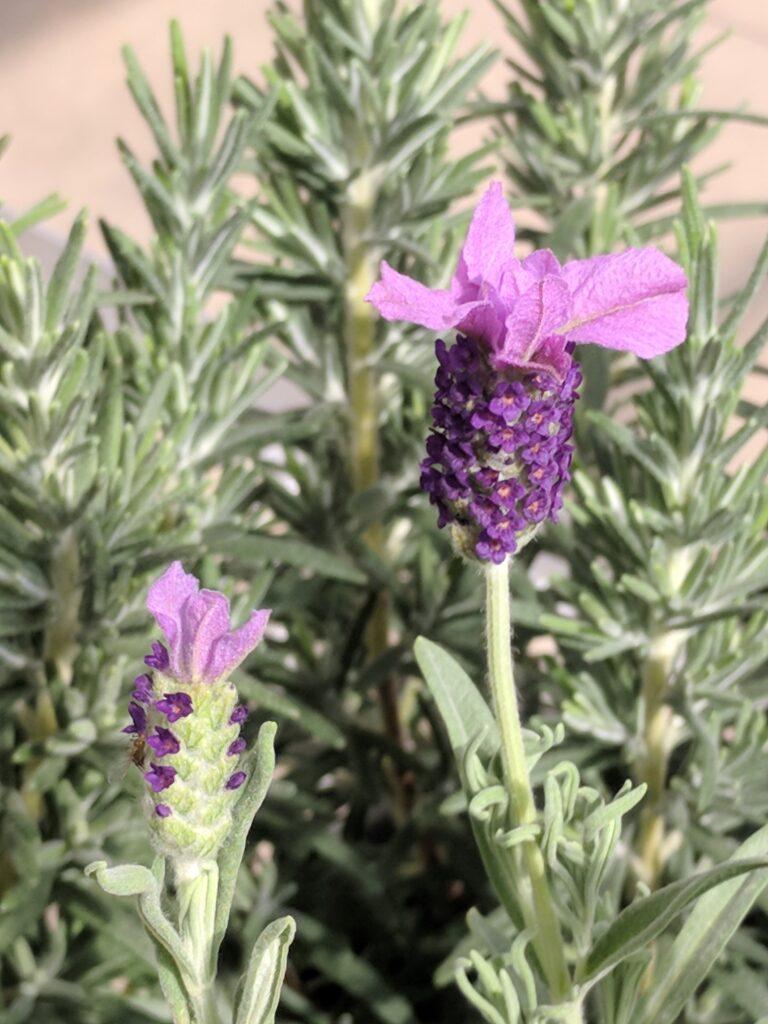
I’ve always thought that the wonderfully bizarre flowers of Spanish lavender looked like bumble bees… fuzzy purple bodies with lilac-colored wings ready to fly.
Spanish lavender has much of the aromatic appeal of the perennial lavenders but in a softer, less woody form. Like all lavenders, Spanish lavender needs an especially well-drained soil. Use a good-quality potting mix and add a bit of perlite or small grit to keep the soil more open.
Full sun and some low-level fertilizer a few times a season should keep the flowers coming.
Mint
We’re all familiar with at least a few varieties of mint such as spearmint and peppermint. But did you know that you can also grow apple mint, orange mint, mojito mint, mint julep mint and so many more?
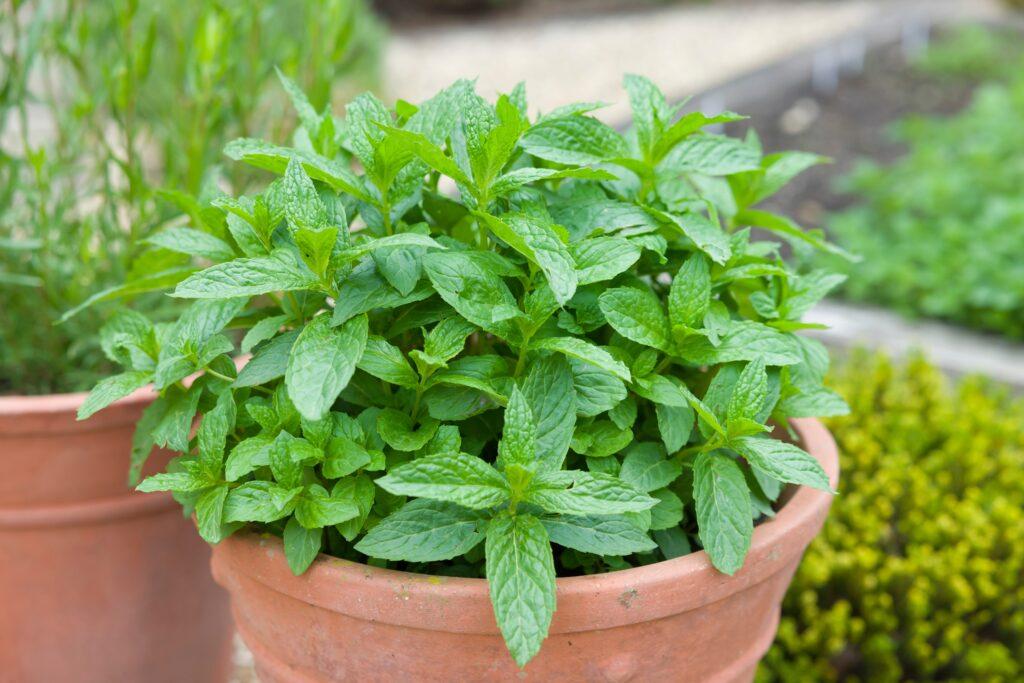
My personal favorite is chocolate mint. And yes… gently rubbing a leaf between your thumb and forefinger instantly releases a distinct aroma of chocolate. What’s not to love!
As many gardeners have discovered too late, planting mint directly in the ground is almost always a very bad idea, unless you want a hillside of the stuff. Mint is programmed to run, and it does it very well. Anyplace where even a tiny bit of mint stem touches the ground it will root and take off.
All that makes mint an excellent candidate for a container garden, elevated well above any soil where the draping stems can’t take root.
Mint is very adaptable. It prefers full sun with a bit of protection from the hottest afternoon temperatures. Water your mint thoroughly when the top inch or two of soil has dried to the touch. And give a rub and a sniff to those chocolate mint leaves I mentioned. You won’t be disappointed!
Oregano
If you like the fragrance of Italian food, oregano probably deserves a place in your herb garden. Oregano is especially easy to grow so it makes an excellent plant for gardeners who haven’t grown herbs before.
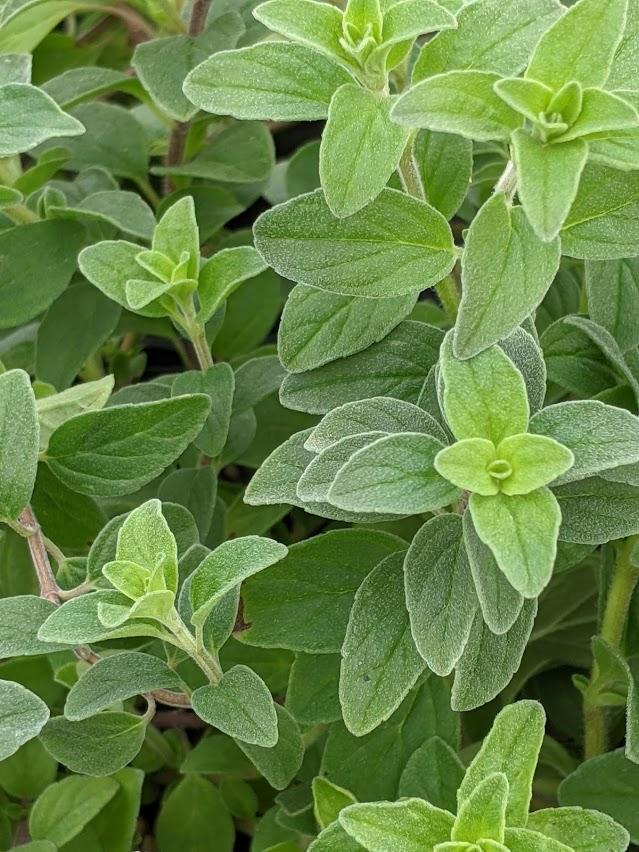
Even just a few oregano leaves go a long way, so you probably won’t need more than a plant or two for the season. Many varieties may be hardy along Colorado’s Front Range, but growing some in a modest-sized container may be the easiest way to have a steady supply.
Oregano is especially sensitive to over-watering. Make sure the container you use has excellent drainage and somewhat gritty soil. Give your oregano full sun, ‘though a bit of bright afternoon shade should be okay. Snip off any flowers as soon as the bud forms to concentrate the plants energy on the aromatic oils the leaves contain.
Rosemary
Rosemary is definitely one of my favorite herbs. Give me a bit of top-flight olive oil, some rosemary leaves and other spices, a shot of balsamic vinegar and some fresh bread and call me happy! I will swirl away ’til every bit of it is gone!
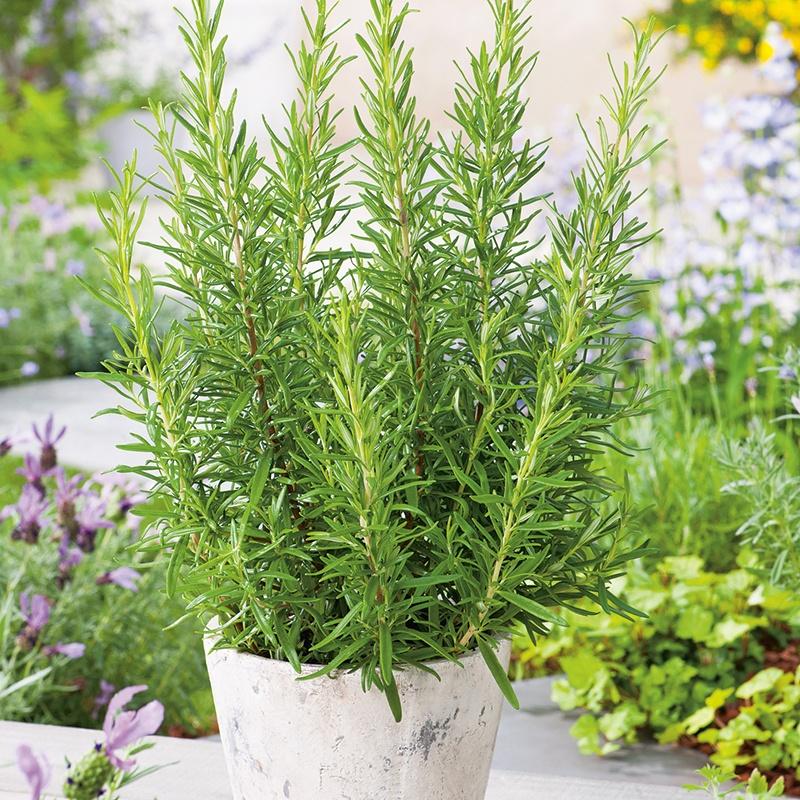
Rosemary is another one of the Mediterranean herbs that will insist on extremely well-draining soil in a container with excellent drainage. Rosemary is attractive for its delicious aroma and rich woodsy flavor, but it’s also a pretty plant, too.
The general rule of thumb with herbs is to remove any flowers as they appear to enhance the aromatics in the leaves, but personally, I make an exception with rosemary. The dainty flowers are just too sweet and pretty to remove and don’t seem to rob the foliage of any of its culinary gifts
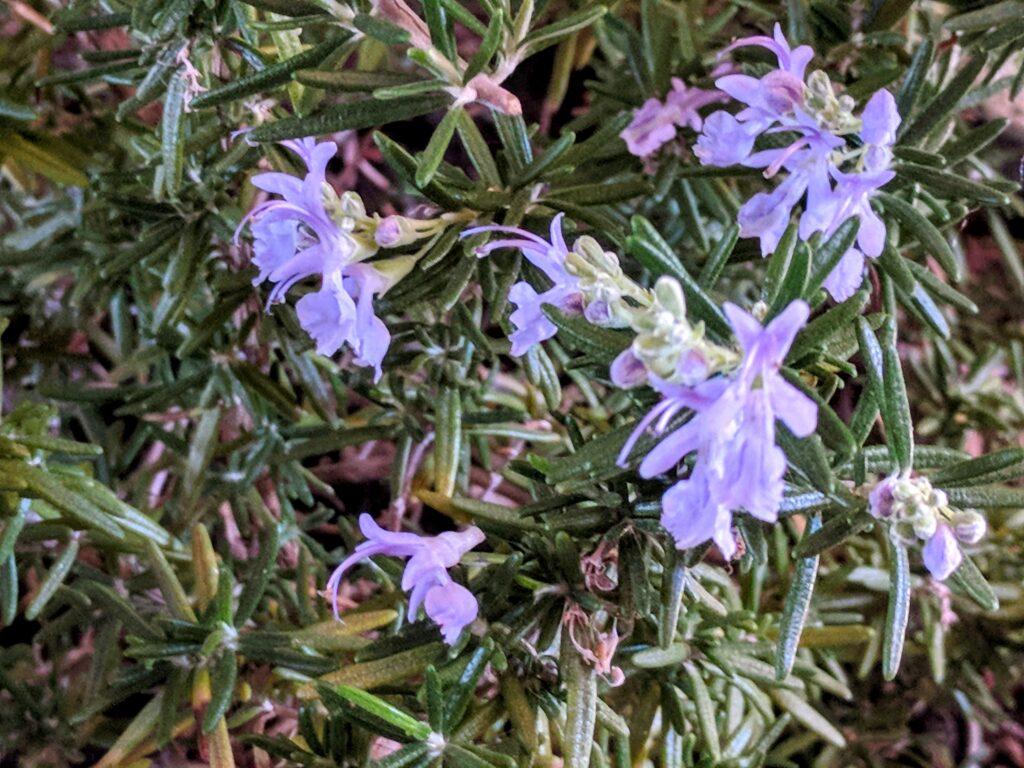
Rosemary prefers that gritty soil I’ve mentioned before and a container with plenty of drainage. Water it deeply but infrequently, watering again when most of the soil has gone fairly dry.
Sage
Just as oregano triggers a craving for Italian food, it seems to me that sage evokes memories of Thanksgiving, roast turkey and herb dressing. I can’t be alone in that!
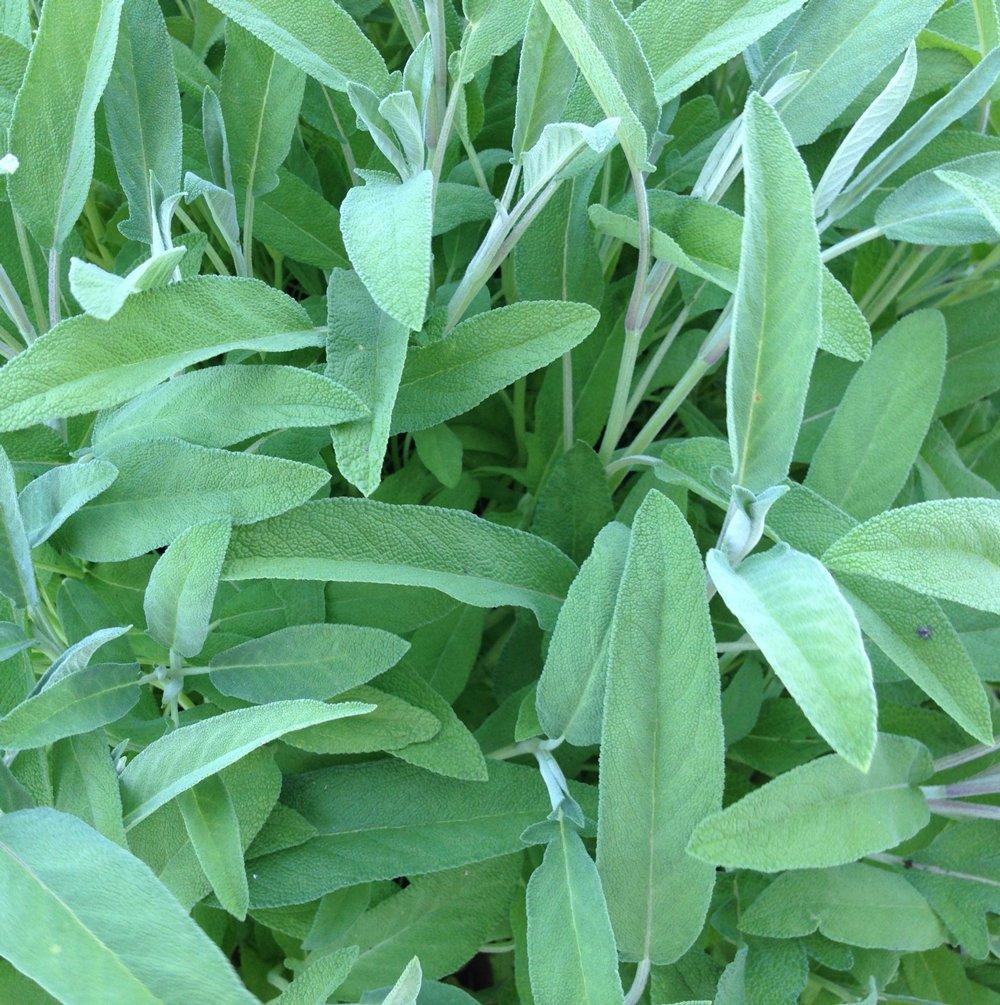
There are several varieties of sage, but many of them are more ornamental than culinary. The best sage for the kitchen is garden or common sage. The leaves of common sage make it quite clear where the soft color “sage green” comes from.
Common sage grows easily in containers. The plants require extremely well-drained soil. They should be watered thoroughly, until water comes out the drainage holes at the bottom of the pot, and then not watered again until the soil has gone almost dry.
Common sage does best in full sun but may need a bit of protection from the hottest part of the afternoon during the height of summer temperatures.
Thyme
Thyme is one of the easiest herbs to grow, as long as it gets plenty of sunshine and isn’t overwatered. It can also flourish in the good-sized pot that it shares with some other compatible herbs like oregano.
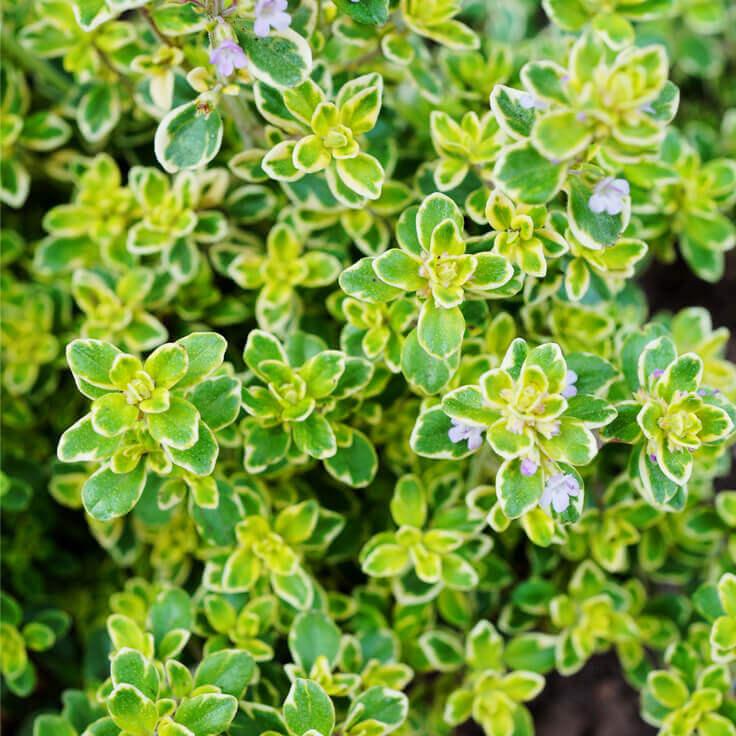
Common or English thyme and lemon thyme (shown above) are ideal for use in the kitchen. They’ll grow best in full sun, but will tolerate some light afternoon shade. The soil should be especially well-draining.
Snip the tips of the stems frequently to keep the plants full and bushy.
Tagawa has herbs galore!
If you’re interested in growing herbs in containers, the herb benches at Tagawa await! Bring your curiosity and your questions to our Annuals Department and get growing! And be ready for a summer of wonderful tastes and aromas once your harvest begins!
